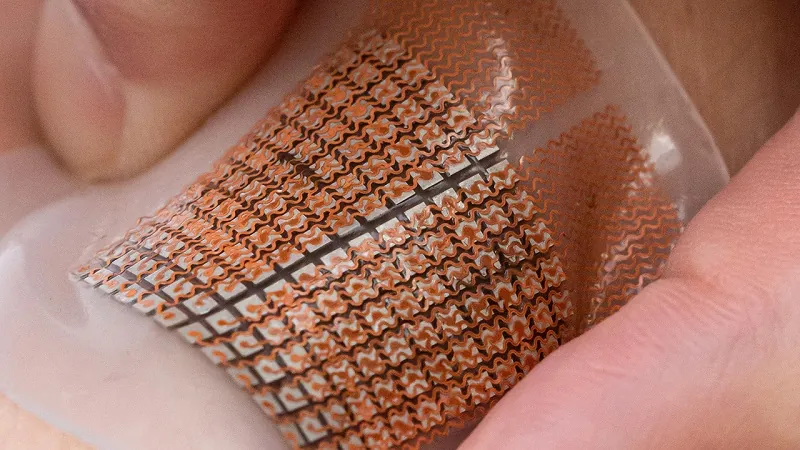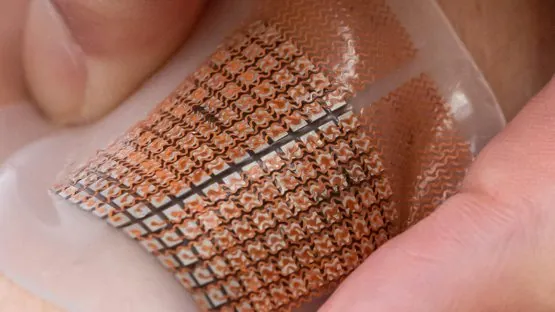Researchers from the University of California San Diego have developed a new non-invasive way to measure blood flow using an ultrasound patch [1].
Realtime blood flow monitoring just got easier
This new flexible polymer patch sticks to the skin and can monitor the flow of blood in vessels up to 14 centimeters deep into the body, offering another example of where medical wearables are heading in the future.
The patch is studded with a 12 x 12 array of ultrasound transducers that allow it to measure blood flow in the vessels beneath it, or with adjustment, adjacent vessels. The array design of the patch allows each transducer to be tweaked and gives it greater utility than a single transducer alone does. This design makes it possible to monitor both organs and blood flow.
The patch could help doctors monitor vascular health and potentially support diagnosis. It could also aid identification of blockages that can lead to an infarction or tissue death (necrosis) due to inadequate blood supply to the affected area.
Accurate measurement of blood flow is often inconvenient and invasive, and it needs a qualified healthcare worker to investigate the vessel using an ultrasound probe. The researchers wanted to design a system for monitoring blood flow that was a more convenient alternative than current approaches.
This patch can simply be applied to the skin, and it measures blood flow in real time. The fact that it can continuously collect data and requires no input from the wearer makes it a great candidate for clinical trials, biohacking experiments, or patient monitoring that requires such data.
The researchers have tested the new patch via a wired connection, and it has proven to be an accurate device for monitoring blood flow. Next, the team plans to develop the patch to have wireless capability, which would allow people to go about their daily business while recording and transmitting data.
Abstract
Stretchable wearable devices for the continuous monitoring of physiological signals from deep tissues are constrained by the depth of signal penetration and by difficulties in resolving signals from specific tissues. Here, we report the development and testing of a prototype skin-conformal ultrasonic phased array for the monitoring of haemodynamic signals from tissues up to 14 cm beneath the skin. The device allows for active focusing and steering of ultrasound beams over a range of incident angles so as to target regions of interest. In healthy volunteers, we show that the phased array can be used to monitor Doppler spectra from cardiac tissues, record central blood flow waveforms and estimate cerebral blood supply in real time. Stretchable and conformal skin-worn ultrasonic phased arrays may open up opportunities for wearable diagnostics.
Conclusion
It is not hard to see patients wearing a wireless upgraded patch to allow around-the-clock, at-home monitoring in people who have vascular issues. The patch could also warn of potential impending issues like strokes before they happen, allowing for better responding from healthcare workers and better outcomes for patients.
The world of medical wearables is becoming increasingly sophisticated, and the more options to monitor health biomarkers in real time while mobile, the better. This is a great example of how a related field could have a direct impact on our field and improve the ease and quality of both clinical trials and biohacking experimentation.
Literature
[1] Wang, C., Qi, B., Lin, M., Zhang, Z., Makihata, M., Liu, B., … & Xu, S. (2021). Continuous monitoring of deep-tissue haemodynamics with stretchable ultrasonic phased arrays. Nature Biomedical Engineering, 5(7), 749-758.



